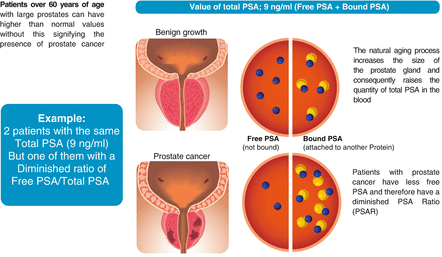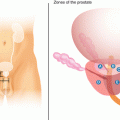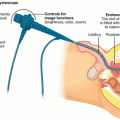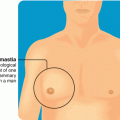Figure 3.1
PSA test
The prostate-specific antigen was discovered in 1979, but its clinical utility was not identified until a decade later. Until this was known, urologists used only the digital rectal examination and a few indirect blood tests, such as the prostatic acid phosphatase, when prostate cancer was suspected. Today, the PSA is the tumor marker most widely used in contemporary medicine, and along with the digital rectal examination and transrectal prostate ultrasound, it’s the best means of identifying patients with a high risk of suffering from prostate cancer, especially in the early stages when the possibilities of cure are greatest (Fig. 3.2).


Figure 3.2
Men older than 50
In developed countries, it is estimated that three out of every four men older than 50 have had a PSA study at some point, which has made it possible to diagnose and treat patients with prostate cancer in early stages and thereby diminish mortality from prostate cancer.
Fact
Tumor markers are those substances that can be detected in blood, urine, or tissues, and whose presence in a higher than normal concentration can indicate the existence of a cancerous tumor. Although that abnormal concentration may suggest the presence of cancer, it is not itself sufficient to diagnose it, and for this reason its utility is reduced to providing a clue for diagnosis or for evaluating the evolution of a tumor already detected by other procedures. Most tumor markers can also be produced by normal cells and thereby give false positives. Likewise, some non-cancerous diseases can cause the levels of certain markers to rise.
PSA Analysis
We already know that PSA can be produced either by a benign prostate cell or from a cancerous prostate cell. For this reason it is very important to know how to interpret the presence and the characteristics of the antigen detected in the blood. Because of this, and due to the fact that up to 25 % of all cancers do not alter the PSA concentration, it is important to distinguish between the behavior of this substance in cancer and its behavior in other benign diseases of the prostate.
The results of the PSA analyses indicate its concentration in the blood. It is not necessary to fast before the laboratory test. The results are generally reported in nanograms of PSA per milliliter of blood (ng/ml) and can vary somewhat from one laboratory to another.
Some drugs, such as Finasteride and Dutasteride (used to treat benign prostate disease), certain infectious disorders such as prostatitis, and even urethral trauma (such as from placement of catheters or dilators, or such as occurs in high-performance cyclists) can modify the PSA values. It’s important to take into account that ejaculation in men over 50 years of age momentarily increases the levels of both the free antigen as well as the total. These return to their normal values in 24 h. For this reason, patients should refrain from intercourse for at least 2 days before the extraction of blood for the study. Contrary to what was believed for many years, the digital rectal examination does not significantly alter PSA levels.
All of the circumstances described above show that an abnormal analysis does not necessarily indicate that a prostate biopsy should be performed or that there is cancer; nevertheless, the higher the PSA concentration the greater the probability of a malignant tumor.
Since the discovery of the prostate-specific antigen, several of its isoforms have been isolated and studied. The most common are bound PSA (which is bound to a plasma protease inhibitor) and free PSA (which circulates without being attached to any other molecule.) Together they add up to the total PSA.
Total PSA
The total PSA is the result of the sum of the antigen that circulates freely and the antigen that circulates bound to proteins. It is estimated that normal values are around 0.7 ng/ml in men under 50 years, 0.9 ng/ml in men between 50 and 60 years of age, 1.2 ng/ml in men from 60 to 70 years, and 1.5 ng/ml in men older than 70. Clearly the natural aging process increases the size of the prostate gland and consequently raises the quantity of total PSA in the blood (Fig. 3.3).










